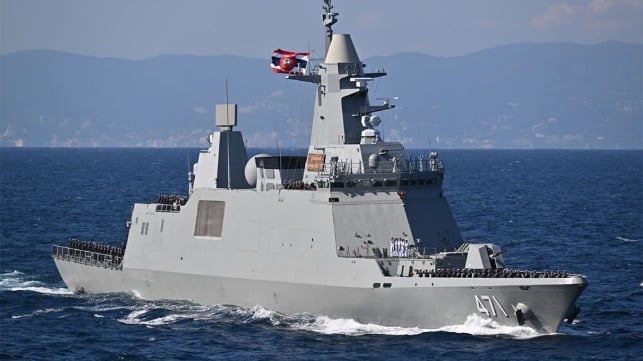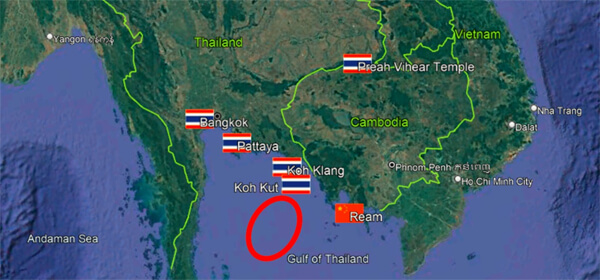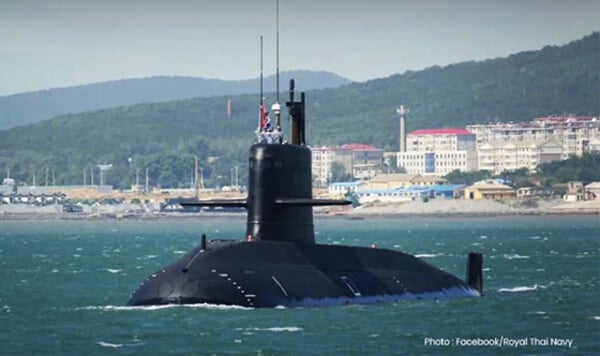Thailand Plans Naval Upgrade After Ceasefire With Cambodia

In an emergency meeting of Cambodia and Thailand’s joint border committee held in Kuala Lumpur and organized by Malaysia, the two countries, which fought a short border war last month, agreed on the basis for a continuing ceasefire. The 13-point agreement was signed under the umbrella of the ASEAN organization, with both China and the United States attending as observers.
The “freeze” agreed is focused on limiting further fighting, with Malaysia volunteering to deploy a defense attaché-led team to the disputed areas to help deconflict further incidents. No understandings were reached about the positioning of the border in the disputed areas. In particular, ownership of the Preah Vihear temple complex in Si Sa Ket Province, at the heart of the dispute, remains in Thai hands.

Area of maritime dispute with Cambodia in the Gulf of Thailand (Google Earth/CJRC)
In addition to the land border dispute, the two countries also have differences at sea in the Gulf of Thailand. During the recent conflict, the Royal Thai Navy helped repel Khmer border incursions on the narrow strip held by Thailand on the mainland to the east of Koh Kut Island. In the sea area to the south-west of Koh Kut is a region with oil-bearing potential. In the Cambodian sector, an oil discovery was exploited but quickly ran dry. Chevron and Thailand’s PTTEP have producing wells and are drilling further wells in the Thai area. But attention is focused on the area between, which is disputed between Cambodia and Thailand, and where there is no agreement as yet on the percentage share that each country will enjoy from discoveries made.
While the ceasefire agreement was being made in Kuala Lumpur, a cabinet meeting chaired in Bangkok by Thailand’s acting Prime Minister Phumtham Wechayachai agreed on additional defense expenditure. There was strong popular support for the Thai armed forces during the border clash with Cambodia, in the run-up to which the Thai Prime Minister Paetongtarn Shinawatra was suspended from office by the Constitutional Court for appearing to be too close to former Cambodian leader Hun Sen. The Armed Forces may have used this sentiment to move forward with defense procurement plans.

Thailand's S26T submarine (Royal Thai Navy)
Aside from ordering additional Saab Gripen E/F fighters, the cabinet agreed on a procurement budget of $1bn for two additional frigates, to be chosen from builders in Germany, Italy, the Netherlands, South Korea or Spain. The aim is for the Royal Thai Navy to have eight frigates by 2037. With Daewoo Shipbuilding having already built the frigate HTMS Bhumibol Adulyadej (F471), South Korea would appear to be the favorite to provide the next two procurements. The Navy already has six older Naresuan and Chao Phraya Class frigates built in China.
The Cabinet also agreed to press forward with the delivery of the first of three S26T submarines for the Navy. HTMS Matchanu is currently being built by China Shipbuilding & Offshore International, with the new submarine now to be powered by the Chinese CHD620 engine. The project is costed at $400m. With China not on the list of bidders for the new frigates, the submarine order is at least partly designed to keep China sweet, engaged with Thailand and neutral in its conflict with Cambodia.
